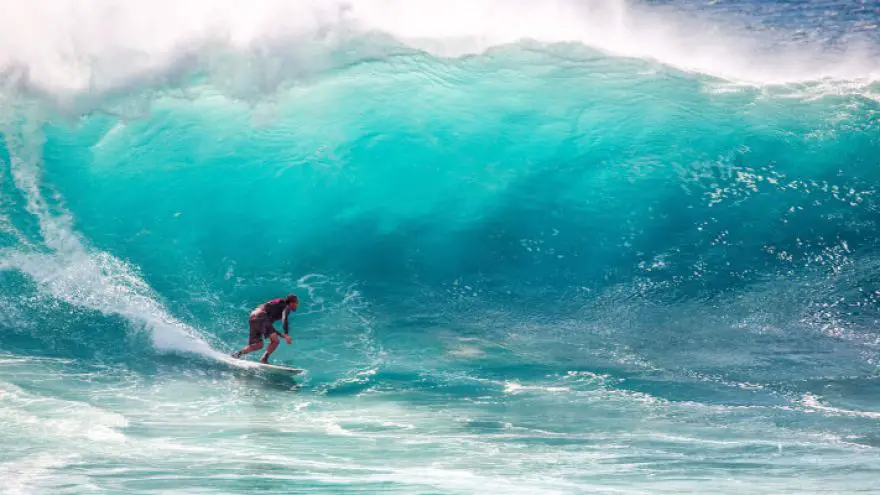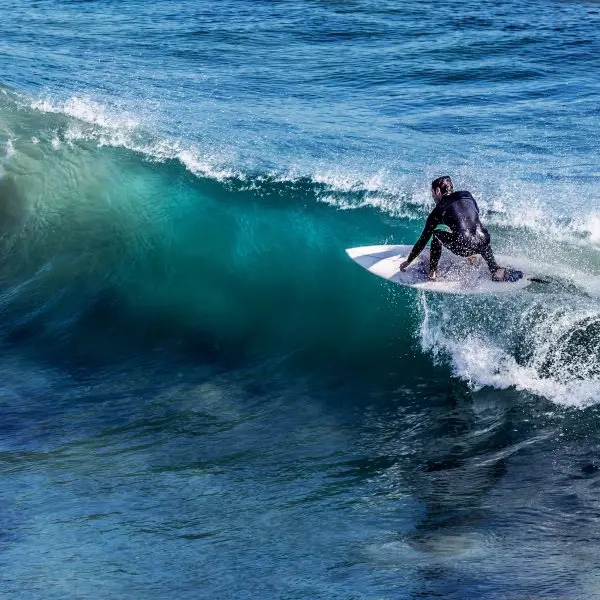The Different Ways a Wave Can Break
 The Different Ways a Wave Can Break
gearweare.net
The Different Ways a Wave Can Break
gearweare.net
To the experienced surfer, the way a wave breaks as it moves towards the shore can be predicated by tallying up a number of factors that influence this phenomenon. The direction of the wind, whether there are any storms currently occurring offshore, and the shape of the ocean beneath a wave are all determining factors for what shape the wave will take as it moves closer to land and begins to collapse. Being able to figure out how a wave will break is important for those looking to surf the best and the biggest waves. It is also important to newbie surfers who want to make sure they stay safe as they learn to ride.
As a means to better understand and predict the behavior of the ocean, the way the waves break has been categorized into a number of different types. Before going over these types it is important to have a clear understanding of what a wave and a break actually are though. It may seem like common sense but the actual science behind how waves work isn’t as intuitive as one might originally believe.
How Waves Work
The size and strength of a wave depend on a number of factors that act open the water. The wind is the most important factor in creating a wave. The winds that come with low-pressure systems, which are associated with rain and clouds, are particularly effective at creating waves, which is why surfers may flock to a beach in bad weather while everyone stays at home.
The longer that the surface of the ocean is exposed to a low-pressure system, the larger the waves created by this system will become. Once a wave is created on the ocean’s surface it will then travel until it hits an obstacle, which could be a coast hundreds or even thousands of miles away. The further that a wave travels the more powerful it becomes, so beaches where the waves travel insane distances to reach create some great surfing conditions.

However, even if a wave travels a long distance, it may arrive on the shore as weak and small if it has passed over underwater obstacles. This is because of changes in the ocean’s depth effect wave height and strength. The underwater object will cause resistance along the bottom of the wave, which creates imbalance and forces the wave to begin to break. Underwater objects that can create this include continental shelves on the oceans flow, sand dunes, and even sunken ships.
Along with the wind and the ocean depth, rain, sun, and tides and currents can affect the strength and size of a wave. When they get closer to shore the wind that is moving from the land towards the ocean also influences the quality of the wave for surfing. Typically these shore winds degrade wave quality by making them choppy. Sometimes though they are desirable since they can help to hold a wave in its cresting position for longer.
The Types of Breaking Waves
When waves get close to the shore the shallowness of the water means that they are no longer able to support their own weight. First, they crest and then they break. The break of a wave is what surfers aim to ride.
How a wave will break depends on the way a shoreline becomes shallow. In other words, does the ocean meet the land is a sloping progression, or suddenly, with the beach dropping into the ocean abruptly? The answer to this question can tell you a lot about what type of waves to expect.

The types of breaking waves can be categorized into the following four categories:
- Spilling Wave – Known as “mushy waves” within surf culture, these waves occur above a gradually rising ocean floor. In this circumstance, the water at the top of the wave will begin to spill slowly until the entire wave becomes whitewater.
- Plunging Wave – These waves occur above sudden changes in the depth of the ocean. The crest of the wave will elongate and curl over the top creating a hollow tube that many surfers covet.
- Surging Wave – These waves are common on beaches with steep bottoms, however, the steepness of the beach will not create these waves on its own. Long swells, bringing large, powerful waves from far away are also needed. These waves have fast bases which don’t allow to crest to enlarge or properly break. For this reason, surging waves only create a small amount of whitewater.
- Collapsing Wave – These waves essentially fall in on themselves. The collapsing motion means that they never break, but do create lots of whitewater, making this type of wave the least desirable for surfing.
As quickly explained above, these different types of waves are more likely to occur on certain types of beaches. The type of terrain that a beach contains is, therefore, another way that surfers classify waves.
The type of breaks as categorized by terrain are:
- Breach Breaks – Waves that break over a sandy bottom falls within this category. Because sand can be easily moved around, this ocean floor at these breaks is variable. This means that the type and quality of wave at a beach break can also be quite variable. However, this is not always the case though, and some produce the same wave again and again. The other important feature of beach breaks is that they tend to be better beginner terrain since a fall will result in the surfer a sandy bottom as opposed to something more harmful such as rocks or anemones.
- Reef Breaks – Reef rimmed and rocky shorelines create these breaks, which are more consistent since the objects beneath the ocean surface are solid and unmoving. These breaks are no joke, and many of the world’s largest and most powerful waves occur at reef breaks. The compounded danger of bigger waves and a treacherous landing means that most of these breaks are a no go for beginners.
- Point Breaks – These types of breaks occur when waves hit the land at an oblique or perpendicular angle, creating a wave that breaks along the shore instead of into it. This makes for some truly long waves which longer than usual. Point breaks can occur above any type of ground and can create any type of wave. The big difference is the distance that each wave will cover, which offers amazingly long rides.











